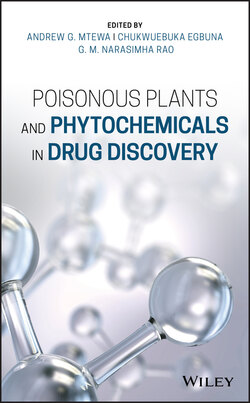Читать книгу Poisonous Plants and Phytochemicals in Drug Discovery - Группа авторов - Страница 32
2.1.1 Endophytic Phytotoxins
ОглавлениеEndophytes in plants are known to produce compounds that are different than those that the plant produces. One of the earliest studies on phytotoxin categorization was carried out successfully in 1980 by Yoder [4], who used the terms ‘pathogenicity’ and ‘virulence’ of toxins as major descriptors, among others. By pathogenicity, Yoder meant the ability to induce disease(s) or disorder, whereas he used the term virulence to describe the severity of the disorder induced.
Phytotoxins that affect plants are usually further categorized by the target range, from the host's range to a wider radius outside the host plant. These are technically called host selective toxins (HSTs) and non‐host selective toxins (NHSTs) [5], where HSTs affect the plant producing the phytotoxin as it hosts the endophyte while NHSTs have no effects on the host plant but affect other plants around it. The mechanisms of action of most HSTs have elements of pathogenicity, where the endophyte liable for a particular phytotoxin invades host tissues, causing some diseases in the plant. In contrast, it is not clear about the roles of NHSTs in pathogenicity [5–7]. Some authors have suggested that NHSTs are not the only pathogenicity determinants in the plants that they affect and they largely contribute to the virulence of the pathogens that produce the toxins [8]. There is a hypothesis that the compounds that a plant synthesizes resemble those that are formed from metabolic processes of endophytes within its cells [9].
